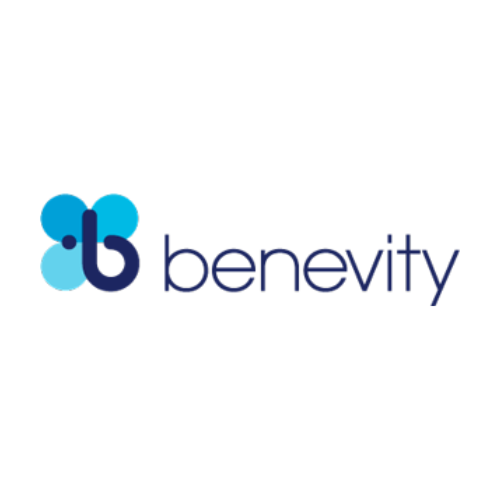Benevity
The world continues to demand that companies step up and use their platform for good. And in a divisive socio-political environment and challenging economic context, the need for corporate purpose programs powering positive change is greater than ever.
Benevity’s Chief Impact Officer, Sona Khosla, and Senior Director of Goodness Solutions, Susan Keith Bleekman, unpacked five trends shaping the future of the industry at ACCP’s recent Annual Conference – highlighting strategies, tactics, and new perspectives CSR leaders are adopting on their journey to create lasting impact.
The trends come from Benevity’s 2023 State of Corporate Purpose report, analyzing proprietary data and insights from Benevity’s community of nearly one thousand purpose-driven brands and their people. The report also includes findings from a survey of 230 CSR leaders on the changing social impact program landscape.
Trend 1: Purpose and polarization are going head-to-head.
While many companies have shown they can be counted on in times of crisis, some businesses have faced backlash for their actions, highlighting a threat to purpose-led progress: polarization.
When asked if companies should be courageous or cautious when it comes to taking a stand on divisive issues, tension emerged among CSR leaders surveyed:

Another dichotomy surfaced: 6 in 10 CSR leaders agree that discussion of politicized topics should not be encouraged or facilitated in the workplace. Yet the same amount of respondents agree that businesses should help people become a better version of themselves.
Navigating these tensions is nuanced. Some companies approach this by excluding specific causes from their giving programs, while others narrowly focus on selecting charity partnerships.
These are logical approaches, but there are risks: employees expect their companies to support their values at work, and companies with closed giving programs see seven percentage points less in average donation participation rates – hindering employee engagement and retention benefits.
There’s no one-size-fits-all answer. Each company must reflect on what is right for them while navigating constant change.
Trend 2: Quiet giving is on the rise.
The current economic climate is putting companies to the test – we’re all being asked to do more with less. Despite this pressure, our data shows companies remain committed to being a force for good, but more quietly than in the past.

What does quiet giving look like in action? Companies are turning their philanthropic focus inward. Companies can make a more pronounced impact by leaning in to support their employees and local communities rather than making bold external statements.
Companies forecasted their top 5 investments in employee programs, all of which prioritize the needs of their people:

Despite this inward focus, social investments to nonprofits serving vulnerable populations will still be maintained through grants and partnerships:

Most companies are maintaining their investments to support key populations, issues, and causes close to home while continuing to back their people to make a positive impact at work and out in the world.
Trend 3: Companies are becoming communities.
Volunteering declined dramatically during the pandemic but bounced back in 2022 with an all-time high of 14.3 million volunteering hours logged on the Benevity platform – a staggering 61% year-over-year increase. Why? As the world re-opened, many volunteers happily resumed their commitments. But beyond that, companies sought out creative ways to strengthen culture across hybrid work environments, with volunteering emerging as an effective way to build community:
- 71% of CSR leaders surveyed are increasing their reliance on volunteering to improve connections and cohesion with their people.
- Three-quarters of CSR leaders are increasing in-person volunteering around office locations to improve employee connection.
In addition to volunteering, companies are pulling another lever to build community: investing in Employee Resource Groups (ERGs).

Trend 4: Employee Resource Groups are now a must-have DEI strategy.
ERGs have been around since the 1960s but have rapidly grown in strategic prominence in the last few years as more companies launched or expanded diversity, equity, and inclusion (DEI) programs.
Six in 10 companies plan to increase spending on DEI initiatives despite the economic slowdown. The top 3 DEI initiatives companies will invest in over the next two years are:
- unbiased hiring practices
- benchmark setting for DEI progress
- ERGs
ERGs create more inclusive workplaces, but they do much more:

Trend 5: ESG is moving toward positive impact.
Environmental, social and corporate governance (ESG) continues to make headlines, so it’s unsurprising that CSR leaders agree on the need to communicate impact. And that impact data will increase support for investments in corporate purpose.

Yet, when it comes to the effectiveness and intended purpose of ESG, only one-third of companies have confidence in ESG as a measurement tool for impact.

The good news is that double materiality – an approach that considers both financial materiality and impact materiality – is gaining traction. While this is still a risk-based approach, it’s laying the groundwork for emerging frameworks that focus on positive outcomes, not just disclosures.

Why is this shift happening? A new generation of employees and consumers are interested in things beyond risk and compliance. They care about making a difference. People don’t just want to feel good; they want to do good and ensure their actions truly support nonprofits.

Final thoughts
These five trends tell how companies use purpose to propel forward while navigating seemingly contradictory forces. Purpose engages and retains top talent and improves our sense of connection, belonging, and well-being. Purpose advances society on the most pressing issues that require our attention and action. Companies that lead with purpose will be best positioned to persevere through uncertainty.
We invite you to read The State of Corporate Purpose 2023 for a deeper dive into these trends and more. In it, you’ll find more data-backed insights that reveal how corporate purpose is evolving.

